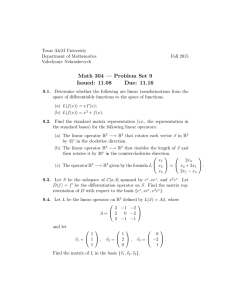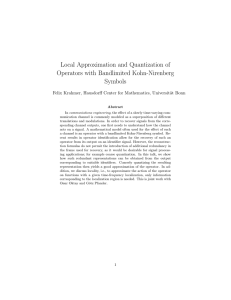Linear Algebra
advertisement
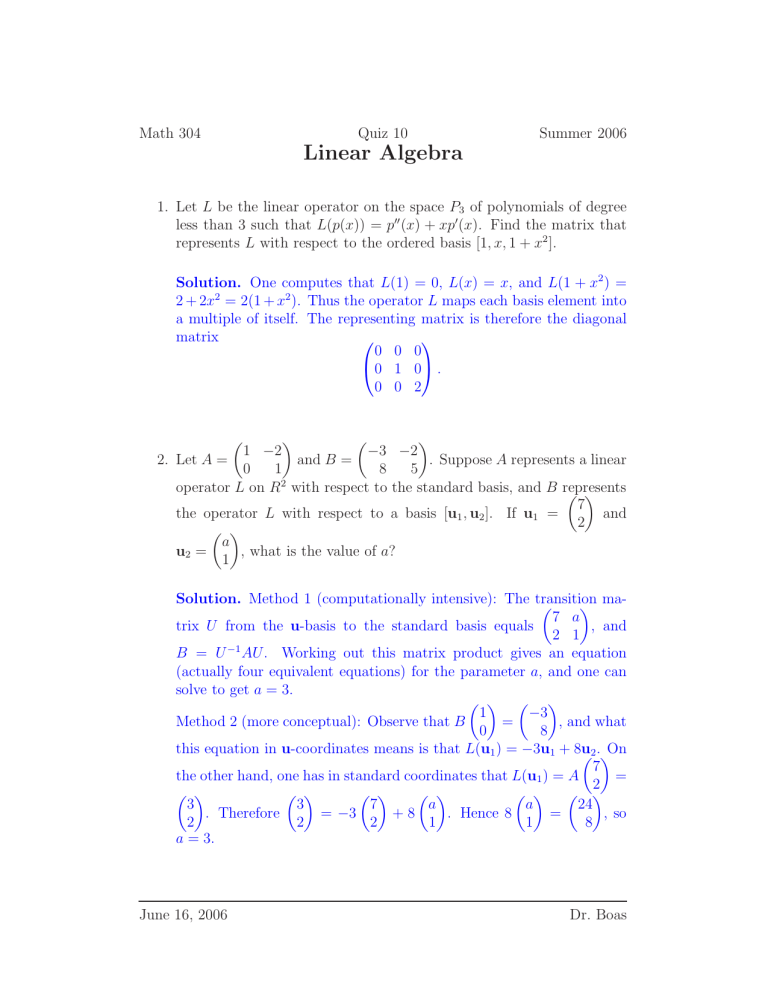
Math 304 Quiz 10 Summer 2006 Linear Algebra 1. Let L be the linear operator on the space P3 of polynomials of degree less than 3 such that L(p(x)) = p′′ (x) + xp′ (x). Find the matrix that represents L with respect to the ordered basis [1, x, 1 + x2 ]. Solution. One computes that L(1) = 0, L(x) = x, and L(1 + x2 ) = 2 + 2x2 = 2(1 + x2 ). Thus the operator L maps each basis element into a multiple of itself. The representing matrix is therefore the diagonal matrix 0 0 0 0 1 0 . 0 0 2 1 −2 −3 −2 2. Let A = and B = . Suppose A represents a linear 0 1 8 5 operator L on R2 with respect to the standard basis, and B represents 7 the operator L with respect to a basis [u1 , u2 ]. If u1 = and 2 a u2 = , what is the value of a? 1 Solution. Method 1 (computationally intensive): The transition ma7 a trix U from the u-basis to the standard basis equals , and 2 1 B = U −1 AU. Working out this matrix product gives an equation (actually four equivalent equations) for the parameter a, and one can solve to get a = 3. 1 −3 Method 2 (more conceptual): Observe that B = , and what 0 8 this equation in u-coordinates means is that L(u1 ) = −3u1 + 8u 2 .On 7 the other hand, one has in standard coordinates that L(u1 ) = A = 2 3 3 7 a a 24 . Therefore = −3 +8 . Hence 8 = , so 2 2 2 1 1 8 a = 3. June 16, 2006 Dr. Boas


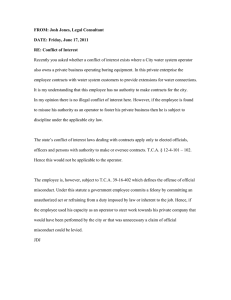

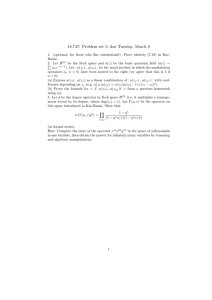
![VARIABLE, OPERATOR AND EXPRESSION [SET – 1]](http://s2.studylib.net/store/data/017977543_1-63cdff75b6f4ecbff2fecef218806221-300x300.png)

